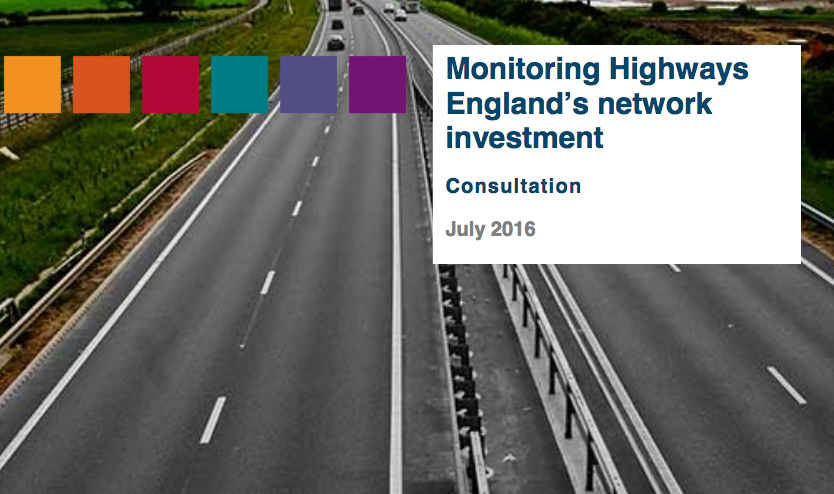I have a new book published on 1 September, one in a series of short books on policy and economics topics described as ‘essays on big ideas by leading writers’. My contribution is a critique of the inconsistencies of transport policy in recent decades, which I attribute to the shortcomings of conventional transport economic appraisal in identifying the benefits that arise from investment. A column in The Spectator magazine of 26 September described my book as ‘excellent throughout’.
The Office of Rail and Road has responsibility for monitoring Highways England’s delivery of the Government’s Road Investment Strategy. This involves investment in England’s Strategic Road Network of £15bn over five years, with more to follow. The ORR has been consulting on how to carry out this task. My response to this consultation is as follows.
The economic rationale for investment in the road network is to generate benefits for users, including in particular the saving of travel time. It would therefore be appropriate for the benefits to users of Highways England’s investment programme to be evaluated as part of ORR’s monitoring process.
In general, traffic congestion on the Strategic Road Network (SRN) arises in or near populated areas, where local traffic adds to long distance traffic; remote from such areas, the traffic generally flows freely. From the perspective of orthodox transport economics, a congested road is an opportunity to invest by adding capacity. But how do road users experience the benefit?
Highways England has evaluated the outcome of ‘major schemes’ five years after opening. It finds that average time savings are small, 3 minutes at peak periods.[1] The economic case for investment depends on multiplying such small time savings by a large number of vehicles (and by monetary values of time saved). Nevertheless, it is relevant to ask how road users experience such small time savings.
While a few minutes time saving would not be material for long distance users, it could be significant to local users on short trips, in particular by allowing more opportunities and choices when changing job or moving house. Indeed, it seems likely that the main benefit of investment in additional capacity on the SRN would accrue to car commuters.[2]
It would therefore be important to understand the nature and distribution of the benefits of the investment schemes of Highways England, as experienced by different classes and locations of road users.
Transport Focus commissioned an Independent Analytical Review for a Road User Satisfaction Survey in 2015. This recommended the development of a continuous online survey of satisfaction using a representative panel of road users. Repeated surveys of a panel would allow trends in satisfaction to be monitored over time. Transport Focus is currently piloting this approach.[3]
Such a survey technique could in principle be used to track the subjective user experience of improvements to the network as a whole. Moreover, relating user experience to specific investments would allow the benefits of these to be understood, as experienced by different classes of road user.
Another approach, also using a volunteer representative panel, would involve monitoring individual travel patterns, based on mobile phone GPS location. This would provide an objective measure of changed travel patterns as the result of investment, and would allow identification of which users benefit, both as regards location, journey purpose and socio-economic characteristics.
Average travel time has been measured for the past 40 years by means of the National Travel Survey. It is noteworthy that average travel time has remained unchanged at about an hour a day, despite many £billions of investment in the road network. This indicates that there are no time savings to users in the long run. There is a therefore a question about the nature of long run benefits, which are mainly to be seen as changes in land use and land value, as land is made more accessible for development that can contribute to economic growth. Travel time savings are therefore short run and their duration needs to be monitored.
Summary
Given the very large expenditures planned for the SRN, it is important to understand the nature and distribution of the benefits of investment. There is an opportunity for the ORR to improve value for money by taking an analytical approach – tracking the experience of road users as this is improved by investment in the road network. Both subjective and objective change should be monitored, to understand the nature and distribution of the benefits of investment.
[1] http://assets.highways.gov.uk/our-road-network/pope/major-schemes/POPE___meta_2011___main_report___final.pdf
[2] http://peakcar.org/valuing-travel-time-savings-problems-with-the-paradigm/
[3]http://www.transportfocus.org.uk/research-publications/research/strategic-roads-user-survey/#_ftn1

